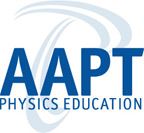- Home
- What We Do
- Laboratory Immersions
- Immersions 2022
- Imm2022Reed_DynamicalBifurcations
Reed College, Portland OR
Exploring Dynamical Bifurcations in Fluid Flows Using Digital Image Correlation
Dates: June 15, 2022 to June 17, 2022
Number of setups available: 2
Maximum number of participants: 4
------------------------------------------------------------------------------------------------------------------------------------------
Overview: Many physical systems may undergo sudden qualitative changes in behavior as system parameters are varied. These so-called bifurcations typically involve spontaneous symmetry breaking and are mathematically closely related to second order phase transitions in equilibrium statistical mechanics. In fluid mechanics, dynamical bifurcations are often observed as the flow rate of the fluid increases and flow transitions from laminar to turbulent flow. In this workshop, we will discuss a simple, inexpensive ($300), table-top experiment in which flow instabilities are induced in a thin layer of electromagnetically-driven electrolyte. Particle image velocimetry (PIV), a powerful anemometry technique based on digital image correlation (DIC), will be used to measure the amplitude of vortical structures that emerge as the system goes through a bifurcation. These measurements are then compared to predictions from bifurcation theory. Performing these experiments not only teaches students about fluid mechanics and nonlinear dynamics but introduces them to range of topics in contemporary experimental physics such as scientific imaging and working with spatially extended data sets and exposes them to techniques used in a variety of engineering applications and in emerging Physics fields like biological materials and soft matter.
Apparatus:
 An acrylic tank is filled with a thin layer of copper sulfate solution. Electrodes are placed on opposite sides of the tank and a current is driven through the electrolyte using an adjustable DC power supply and monitored using a digital multimeter. The tank is placed on top of a leveling plate with a series of bar magnets mounted on its surface. The magnets are arranged so that they create regions with a magnetic field that points vertically into or out of fluid. The interaction between the current and the magnetic fields leads to a Lorentz force on the ions in the electrolyte, which drag the fluid along with them and drive a flow.
An acrylic tank is filled with a thin layer of copper sulfate solution. Electrodes are placed on opposite sides of the tank and a current is driven through the electrolyte using an adjustable DC power supply and monitored using a digital multimeter. The tank is placed on top of a leveling plate with a series of bar magnets mounted on its surface. The magnets are arranged so that they create regions with a magnetic field that points vertically into or out of fluid. The interaction between the current and the magnetic fields leads to a Lorentz force on the ions in the electrolyte, which drag the fluid along with them and drive a flow.
The flow can be visualized by seeding it with tracer particles illuminated by LED panels and imaged using a camera. The resulting images are analyzed using an open-source Python-based PIV package to extract the velocity fields. For low levels of forcing the flow follows the symmetry of the magnetic field arrangement, but for sufficiently high forcing the system undergoes a pitchfork bifurcation that breaks this symmetry and leads to the emergence of vortical structures. The strength of these vortices is predicted to scale as the square root of parameter called the Reynolds number, which captures the relative importance of the inertial and viscous damping terms in the governing Navier-Stokes equations.
The cost of the apparatus plus consumables for several years of use ranges between $200 and $450 dollars depending on what equipment is already available at the participant’s home institution. A list of materials, consumables, and optional upgrades is available here: https://bit.ly/3d3t31C
There are no special safety considerations besides the usual hazards involved in working with chemicals. Copper sulfate is not particularly dangerous (it is commonly used to prevent the growth of algae in swimming pools), but must be disposed of properly as it can be toxic to fish and other aquatic animals.
Participants should bring their lab notebook and a flash drive. Although lab computers will be available, participants may find it useful to use their own laptops.
Schedule:
Day 1, Morning:
- Participants will learn how to prepare the working fluid and how to make the relevant ancillary measurements of its physical properties relevant to the analysis of the system (e.g., viscosity).
- Participants will learn how to fabricate/set up the apparatus and acquire raw data. Strategies for improving the quality of the data will be discussed.
Day 1, Afternoon
- Participants will learn/review basic image manipulation in Python and how to carry out PIV measurements using the OpenPIV library, as well as the theory behind digital image correlation, which underpins the technique.
Day 2, Morning
- Participants will learn/review the basic bifurcation theory/nonlinear dynamics and fluid mechanics needed to understand the experiments. Strategies for presenting this material to physics students who may have not seen this in their physics classes will be discussed.
Day 2, Afternoon
- Participants will set up the experiment and gather data to show that the system undergoes a pitchfork bifurcation above a critical Reynolds number.
- Participants will learn how to extract the Reynolds number and the amplitude of the vortical structures that emerge once the flow becomes unstable from the measured flow fields and use these to confirm theoretical predictions of the scaling of vortex strength with Reynolds number from bifurcation theory.
Day 3, Morning
- We will discuss how to numerically simulate the system in Python to confirm the scaling behavior observed in experiments and predicted by theory and to make predictions about the system’s behavior in parameter regimes that are not amenable to pen and paper calculations.
 Mentors: Daniel Borrero
Mentors: Daniel Borrero
Daniel Borrero received his BS in Physics from the University of Texas at Austin. After receiving his PhD in Physics from Georgia Tech in 2014, he briefly taught at Reed College, where he worked to restructure the instrumentation laboratory course using a project-based curriculum. Since 2016, Daniel has been a faculty member in the Department of Physics at Willamette University, where he has continued his research fluid systems with complex spatiotemporal dynamics. He has taught courses across the physics curriculum and has recently been involved with departmental efforts to introduce scientific computation to the introductory physics sequence. Daniel is a member-at-large of ALPhA’s Board of Directors and a member of the Executive Board of the APS Forum for Early Career Scientists. He is also part of the editorial team for The Journal of Advanced Undergraduate Laboratory Investigations B, a mock journal where students in advanced lab course can exchange papers with students at other institutions for peer review.
Contact Info: Daniel Borrero-Echeverry, Willamette University, Department of Physics, 900 State St., Salem, OR 97301. Email: dborrero@willamette.edu. Phone: 503-370-6753.
Please note that the Jonathan F. Reichert Foundation has established a grant program
to help purchase apparatus used in Laboratory Immersions. Limitations
and exclusions apply, but generally speaking the Foundation may support
up to 40% of the cost of the required equipment.





